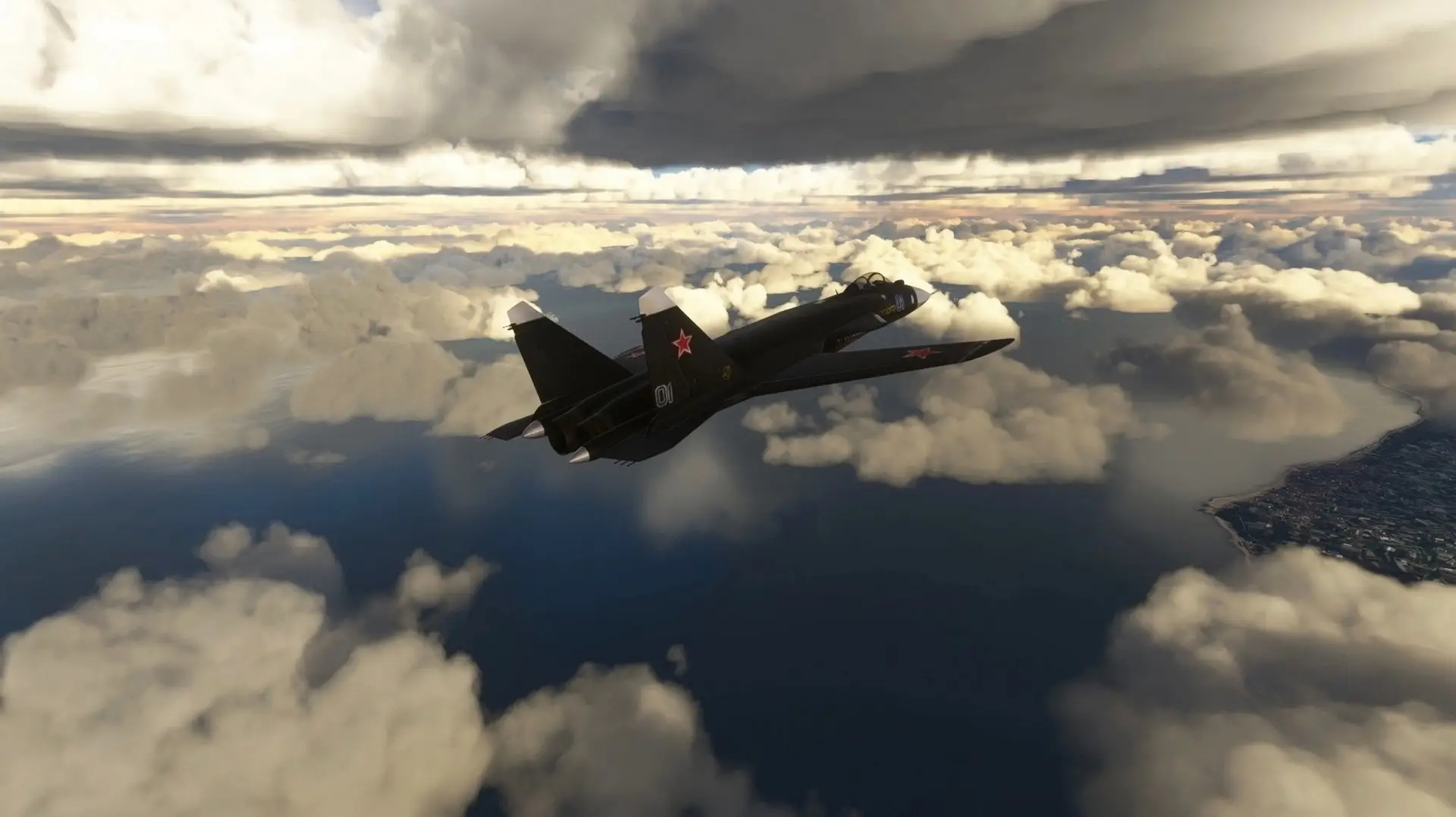The Su-47 Berkut is a single-seat, twin-engine, experimental military jet aircraft with forward-swept wings developed by Russian aerospace manufacturer Sukhoi. The company built only one Berkut (“Golden Eagle”), and it took its maiden flight on September 25, 1997. The jet was used to develop and test advanced fly-by-wire flight controls, composite materials, and high-performance aerodynamic components. Much of the data gleaned from test flights of the Su-47 has been used in the development of advanced and evolving aircraft designs and flight techniques.
The Su-47 traces its history to the early 1980s when the Soviet military sought to pioneer novel aircraft that could fly at supersonic speeds and were also extremely maneuverable at low speeds. Sukhoi engineers investigated the forward-swept wing concept. Although a forward-swept wing is highly unstable, it engenders high levels of maneuverability when coupled with computer-assisted flight controls. Supersonic flight of such aircraft necessitates advanced materials and high-strength internal wing engineering due to stresses imparted at transonic and supersonic speeds, notably at wingtips.
Sukhoi developed an advanced, high-speed flight control computer and a fly-by-wire system to harness instability to optimize maneuverability. For supersonic speeds, they built the wings of the Su-47 almost entirely out of composite components for strength and weight advantages. They mounted canard foreplanes in front of the main wing for pitch control and stability. They designed the empennage with twin vertical stabilizers and a horizontal stabilizer blended into the fuselage. The Su-47 also features advances for pilot efficacy, including a glass cockpit and side-stick control.
By the early 2000s, Sukhoi had conducted more than 100 test flights of the Su-47, including supersonic tests. The jet, one of the most distinctive in aviation history, helped develop a wide range of new technologies, including electronic warfare systems, radar systems, and high-performance flight control computers and fly-by-wire systems.
The Su-47 measures 74 feet, 2 inches in length, stands 21 feet tall, and has a wingspan of 54 feet, 9 inches. It is powered by two Soloviev D-30F6 afterburning turbofan engines that each produce up to 21,000 pounds of thrust in military power and up to 34,000 pounds of thrust with afterburner.
The Su-47 Berkut has a range of 2,100 miles, a service ceiling of 59,000 feet above sea level, and it climbs at 46,000 feet per minute. It has a top speed of 1,400 miles per hour (Mach 2.2) and has a g limit of +9.





